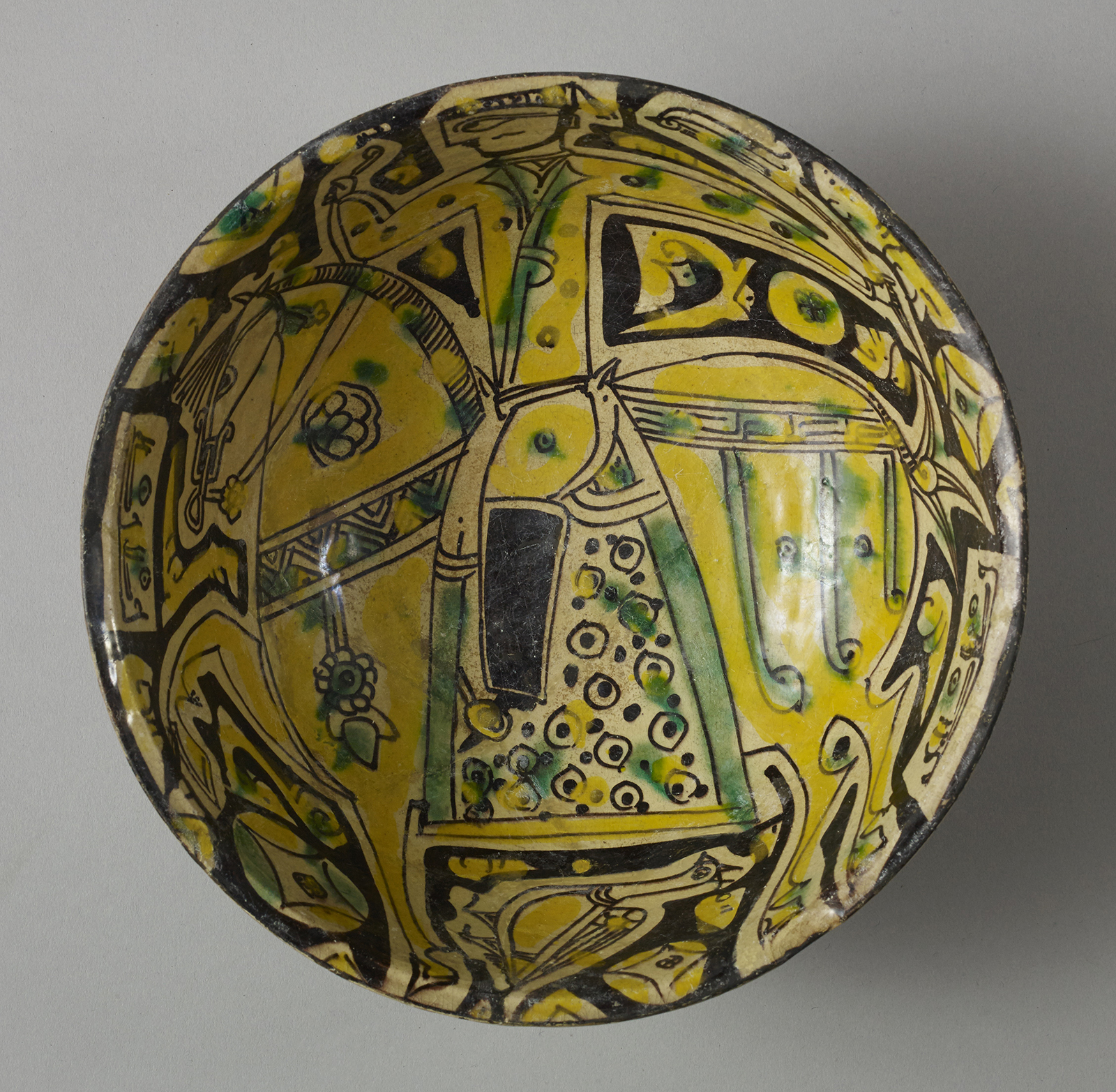Click on the image to zoom
Bowl with Horse, Rider and Bird
- Accession Number:AKM753
- Place:Iran, Nishapur
- Dimensions:9.5 x 22.2 cm
- Date:9th century
- Materials and Technique:Earthenware, polychrome decoration under a transparent glaze (buff ware)
Ceramics of this type, with painted decorations in dark brown, green and yellow in a highly distinctive style, were unearthed in large quantities at Nishapur during the excavations undertaken by The Metropolitan Museum of Art, New York, between 1935 and 1940. They have been labelled as “buffware” - referring to the background colour of the designs. In most cases the decoration comprises geometric designs, plants or animals, but some pieces feature human figures. Pre-eminent among these is a group of bowls showing figures on horseback, for which this bowl unearthed during the Nishapur excavations serves as the reference point. The figures involved are monumental, occupying all the available surface area. The few spaces left free are filled with stylised motifs: here, half-palmettes, circles containing a lozenge, and also two pseudo-epigraphic cartouches. The scene is often supplemented with animal figures - birds, cats, ibexes - in a spatial arrangement that is wholly non-realistic: on this bowl, a sort of goose is placed horizontally between the horse’s feet. The dark brown background, with a fine contour line surrounding the rider, his mount and the decorative elements, is a relatively rare feature: in most pieces the background is left in its original buff colour, against which the dark coat of the horse stands out. The rider and the horse present certain features that are characteristic of this series along with other details that are more original. For example, the horse - as is often the case - has quite a stocky build, short legs, a small head, a knotted tail and a neat harness with pendants. The knot of the tail forms three pointed strands. The rider, with his face in profile and his body in three-quarter profile, holds the reins in his right hand and brandishes a crop in the other. This is a unique feature: most riders in this group are shown holding a straight sword in the Sassanid style. Our rider is also dressed in a distinctive fashion: apart from the standard leggings (again reminiscent of the Sassanid era), he wears a garment with a rounded neckline instead of the usual coat of mail and he has a kind of flat hat on his head; the headwear seems to be unique. The style of this “buffware” has often been interpreted as a survival of ancient Iranian motifs - birds, ibexes, horseriders - which remained very common in the repertoire of eastern Iran. The figure of the lone horserider - warrior, hunter, polo player, legendary hero or prince - remains a defining motif in Islamic art. Once again it is difficult to assess whether an image of this kind referred to a particular text or body of texts.
Note: This online resource is reviewed and updated on an ongoing basis. We are committed to improving this information and will revise and update knowledge about this object as it becomes available.




